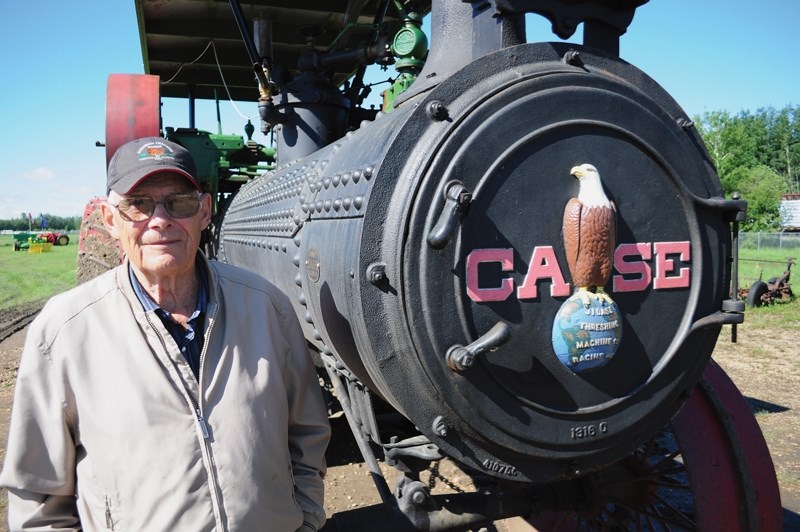A group of Westlock tractor buffs helped to inject some new steam into an old engine at last week’s Vintage Tractor and Machinery Show June 4.
New and old, each tractor on display held a special place in Westlock’s history, and the history of agricultural development across the country, but for club member Bernard Wiese and his 1919 Case Steam Traction Engine, that story stretches across two nations and nearly a century.
A regular fixture at the show since it was completed in 2012, the engine took four years of hard work to restore, but Wiese said that it was a labour of love, and an essential part of Alberta’s history.
The machine started its journey when it crossed the border from Dakota in 1919, finding its way to a homestead in Carseland, east of Calgary, where it farmed for nearly a decade.
After Carseland, it made its way to Chase, B.C. where it ran as a sawmill engine, then back to Alberta where it supplied steam for a drilling rig.
A precursor to modern diesel tractor engines, Case engines could be used for agricultural work but the large steam boilers excelled at belt-driven, stationary tasks, Wiese explained.
“Where the Case is best is running a saw mill or threshing grain,” he said.
“It was so cumbersome and awkward and heavy that tractors came and took over. Diesel engines got smaller with higher horse power all the time.”
Eventually, a Vernon man brought the steam machine back to B.C., where Wiese tracked it down.
“It’s a small community, and I was able to buy it,” Wiese said.
“He had some other people interested in it from across the border, but I felt that it belonged here in Alberta.”
Once the engine arrived, the hard work started. He and a group of several other local tractor club members got to work restoring the antique vehicle.
After two rounds of design review and testing, they determined that the boiler, which operates at 150 PSI, was secure and ready for use.
In fact, Wiese said, the ultrasound showed it was one of the best in the country.
“We do an ultrasound every five years, a hydro pressure test every year. We test them to 1.5 times operating pressure,” he said.
“The ultrasound measures the thickness and quality of the boiler. That’s probably the best original boiler that there is in Canada.”
Stringent Alberta tractor regulations, he added, caused special difficulty during the rehabilitation process and, on several occasions nearly sank the project.
But in the end, tough provincial standards ended up working to the group’s advantage.
“Some of the Case boilers were even advertised as ‘Alberta special’ because they were a little heavier and were so tough,” he said.
“There’s never been a documented case of a boiler failing because of construction, though. Whenever it failed it was only because it fell through a bridge or culvert.”
One documented instance of a Case engine exploding in Ohio in 2001 also gave the project added regulatory hurdles.
That engine had been modified by its owner, removing several safety valves designed to release excess pressure, something that’s not a concern with the current engine.
The Westlock engine, he pointed out, is almost entirely made from original parts, with just a few recast gears.
The water tank and coal bunkers were hand-made by tractor club members with over 1,000 rivets. The piping was also done locally, he said.
The final touches of paint and decals might seem frivolous, but, in the end, the machine’s name and decoration are just as important a part of its history as the metal and gears.
“There are publications that document it. It’s all part of preserving our agricultural heritage,” he said.



